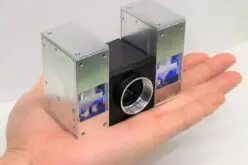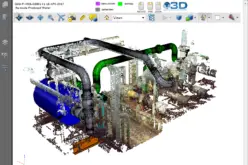Purana Qila LiDAR Survey to Guide ASI’s New Excavation in Search of Indraprastha

The Archaeological Survey of India (ASI) is set to resume its excavation efforts at Purana Qila, one of Delhi’s most significant archaeological sites, in search of evidence related to Indraprastha, the legendary capital of the Pandavas from the Mahabharata. This renewed excavation, beginning in October, will be guided by a state-of-the-art Purana Qila LiDAR Survey to enhance precision in uncovering buried structures and artifacts.
The Purana Qila LiDAR Survey will be crucial in the initial phase of the project. LiDAR technology, which uses laser scanning to produce accurate three-dimensional maps of the terrain, will allow archaeologists to detect underground features with remarkable accuracy.
This approach, recommended by the Union Ministry of Culture two years ago, aims to increase the efficiency and accuracy of archaeological investigations at this historically rich site.
The new phase of excavation will introduce additional trenches to the west and north of the previously explored areas, particularly around the Kunti Temple. This strategic expansion is designed to explore the less-examined regions of Purana Qila.
Also Read – Geospatial Technologies to Preserve Heritage Monuments
In 2022, excavations at the Sher Mandap site of Purana Qila yielded significant finds, including Painted Grey Ware (PGW) pottery dating back to 1100 BCE to 500/400 BCE. While these discoveries provided valuable insights, they did not conclusively link the site to Indraprastha or the Mahabharata. The upcoming Purana Qila LiDAR Survey could be the key to uncovering more definitive evidence.
Previous excavations have revealed various cultural layers at Purana Qila, ranging from the pre-Mauryan to the Mughal periods. Notable discoveries include a 900-year-old Rajput-era statue of Vaikunth Vishnu Bhagwan, a terracotta statue of Gajalakshmi from the Gupta period, and coins and seals inscribed in Brahmi script.
Additionally, structural remains predating the Shunga-Kushan period, a terracotta well, an advanced drainage system, and numerous copper coins were unearthed. These finds add to the site’s historical depth, making the Purana Qila LiDAR Survey an essential tool in guiding future excavation efforts.
Purana Qila is unique due to its potential links to the Mahabharata, being the only site in Delhi directly associated with the epic. Over six previous excavation campaigns have uncovered evidence of nine distinct cultural periods at the site.
The discovery of PGW pottery in 2014, considered a significant connection to the Mahabharata period, was hailed as a major breakthrough in understanding the historical context of the epic.
The renewed excavation efforts, bolstered by the Purana Qila LiDAR Survey, are expected to shed more light on the ancient city of Indraprastha. Ajay Verma, CEO of Heritage and Events at the Sabhyata Foundation, envisions creating a comprehensive narrative around Purana Qila’s historical significance.
Plans include developing tourist events, museums, interpretation centres, and heritage walks focused on the Mahabharata, further intertwining Purana Qila with its epic heritage.
The Purana Qila LiDAR Survey and the subsequent excavations could finally uncover the long-sought secrets of Indraprastha, enriching our understanding of this ancient city and its place in Indian history.
Source: Organiser.org










